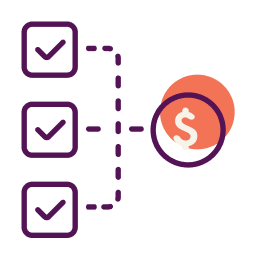Vacations are an important piece of the workplace puzzle. They revitalize employees, making them happier and more productive. In fact, studies show that 77% of human resource managers believe that employees who take most or all of their vacation time are more productive in their jobs than those who do not (that includes you, boss person).
That said, scheduling employee time off, especially during peak vacation times, can be a headache for even the most organized employers. However, there are ways you can mitigate any issues, making it easier on both your business and your employees.
Set Clear Policies
In the work place, clearly defined policies are often what stand between confusion and order, chaos and calm. Vacations are no exception.
By establishing a clear vacation policy, you can gain some control on the type and frequency of requests, as well as the amount of notice you have (time to plan) prior to the employee taking vacation.
What your vacation policy looks like depends on a variety of factors, including how you staff your business (hourly shift workers versus salaried workers), the amount of workers who can successfully complete or are trained to do a specific task, and the type of industry in which your business falls (restaurant vs marketing agency, for example).
It’s also important to consider what outside regulations you may be required to adhere to; for example, union employees will be subject to the vacation policies as outlines in their contracts.
In order to have a clear and effective policy, it must be accessible, easily understood, and presented to employees during their onboarding process or after any updates to the policy itself have been made. It’s also important to include it in your employee handbook and let employees know how and where they can access it. Additionally, a quick reminder before peak request seasons can also have a positive impact.
Not sure what to include?
- Request deadlines, or how far in advance an employee must request time-off, particularly when it’s for more than a day or two.
- Request method, or how an employee should complete the request process.
- Seasonal exceptions that would govern requests. For example, many eCommerce companies limit vacation time during peak holiday workdays, like Black Friday and Cyber Monday.
- Information about accrual/expiration, such as how vacation time is accumulated or when/if it expires (i.e., a use it or lose it policy versus a carry-over policy).
Incentivize Off-Season Vacations
A time-off policy plays an instrumental role in the work places, but it may not be enough to prevent issues involving multiple requests for the same time period. In this case, you may find that creativity, not policy, becomes an effective tool.
If you know you’ll be faced with multiple requests for the same time period, consider using incentives to encourage employees to consider alternative days or weeks. For example, an extra vacation day, monetary bonus, or another type of incentive can be used to entice employees to work on holidays, when your requests will be highest.
Be Fair
One of the hardest things to do, at least for most of us, is to deny a time-off request because another employee already has the day(s) off, especially around holidays or when family schedules play a significant role in their planning.
Seniority is often a go-to solution, though even that can be unfair at times. The same can be true of the first come, first serve approach. There is no clearly defined, “fair” approach (isn’t that the case with everything in life?), but there are ways you can help spread the vacation wealth, so to speak. Logging vacations and keeping those records is one way.
By keeping a log of past vacations, you can alternate requests year over year. For example, if everyone wants the day after Christmas off, a log showing what employees had it off the prior year can help you decide who gets that opportunity the following year.
Allow Employees to Work It Out
This sounds risky, and it certainly isn’t a good move for every company, but in some cases, allowing employees to work it out with each other can help decrease the burden on managers and leave everyone happy. When is that the case? Shift work can be an excellent example. If an employee needs to take time off, and there are others who can fill in for them or switch shifts, the crisis may be all together averted.
Have a Coverage Plan
The most pressing question associated with employee vacations is, “how will the work get done.” Though some work can be completed ahead of time, there are still everyday tasks or unexpected issues that will need to be resolved over the course of a vacation period.
Without a coverage plan, those issues can create chaos; however, implanting a coverage policy that divides responsibilities among capable employees can mitigate that risk.
Vacations are a vital piece of a healthy working environment, but that’s not to say they can’t create chaos in the work place if requests aren’t handled properly. A strong and fair vacation policy, paired with some innovation and employee cooperation can make vacation a breeze, even if you’re not the one reaping the direct benefits of extended relaxation.
This article was originally written on March 13, 2018 and updated on January 29, 2021.



Have at it! We'd love to hear from you and encourage a lively discussion among our users. Please help us keep our site clean and protect yourself. Refrain from posting overtly promotional content, and avoid disclosing personal information such as bank account or phone numbers.
Reviews Disclosure: The responses below are not provided or commissioned by the credit card, financing and service companies that appear on this site. Responses have not been reviewed, approved or otherwise endorsed by the credit card, financing and service companies and it is not their responsibility to ensure all posts and/or questions are answered.